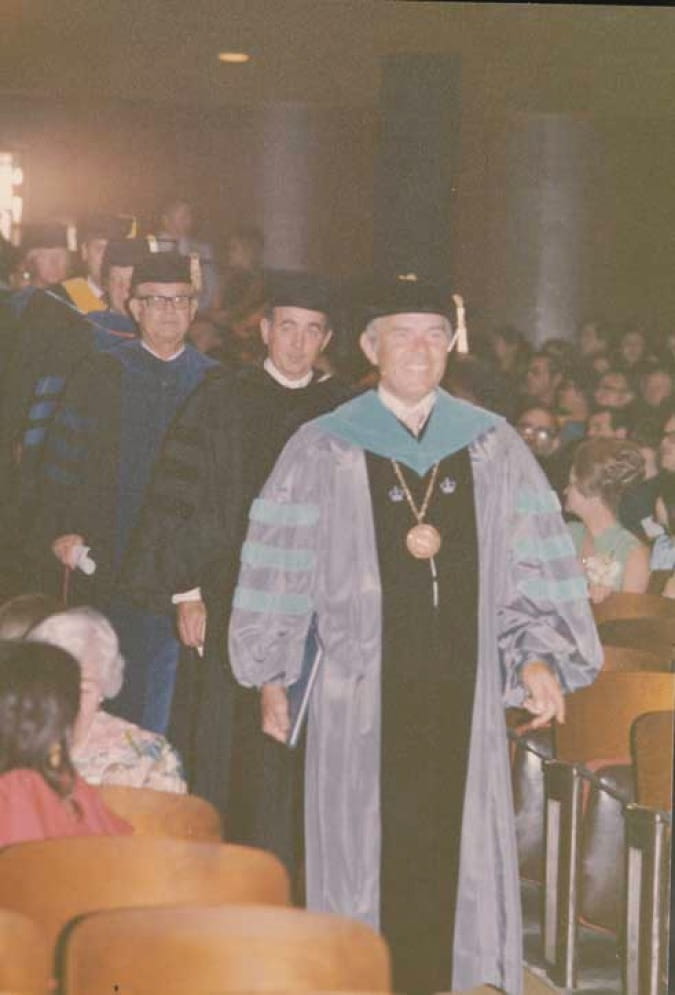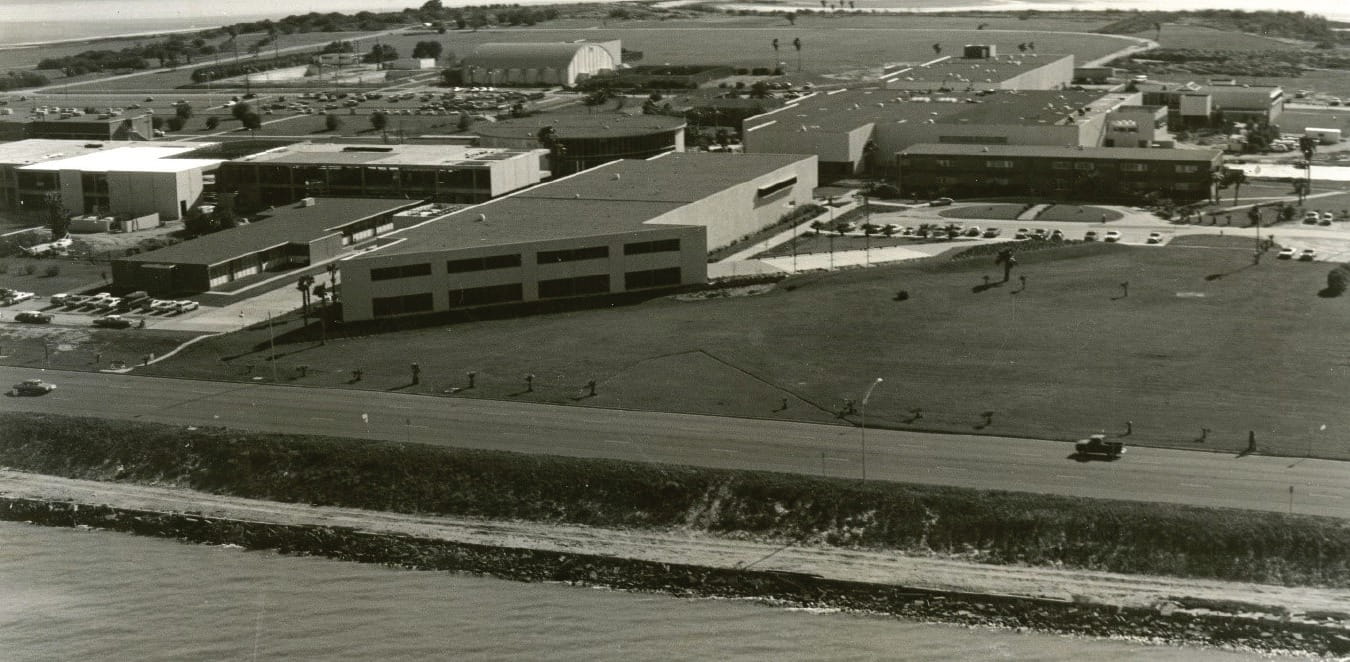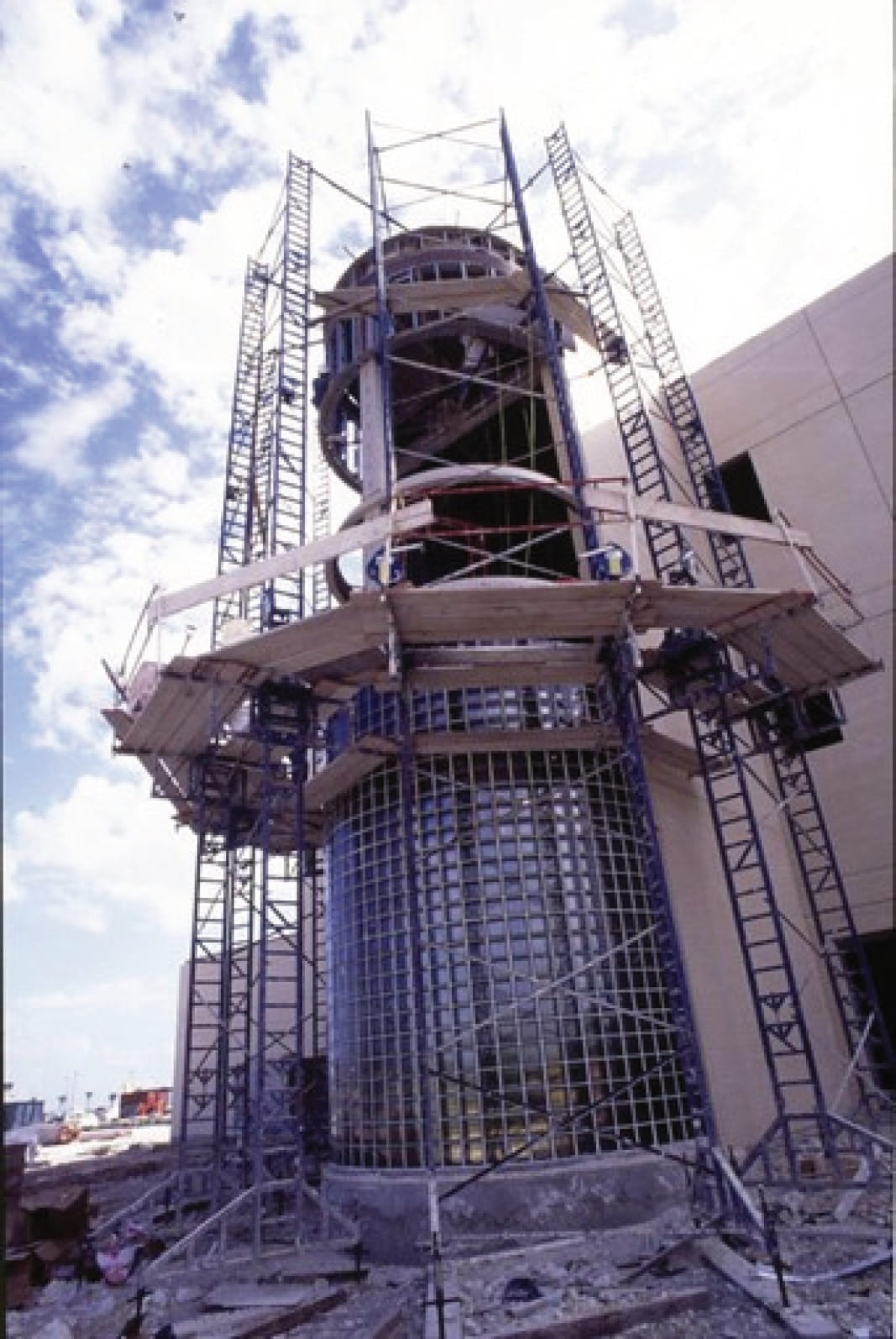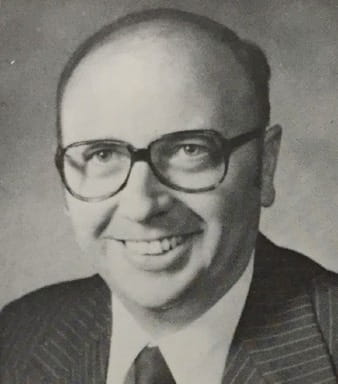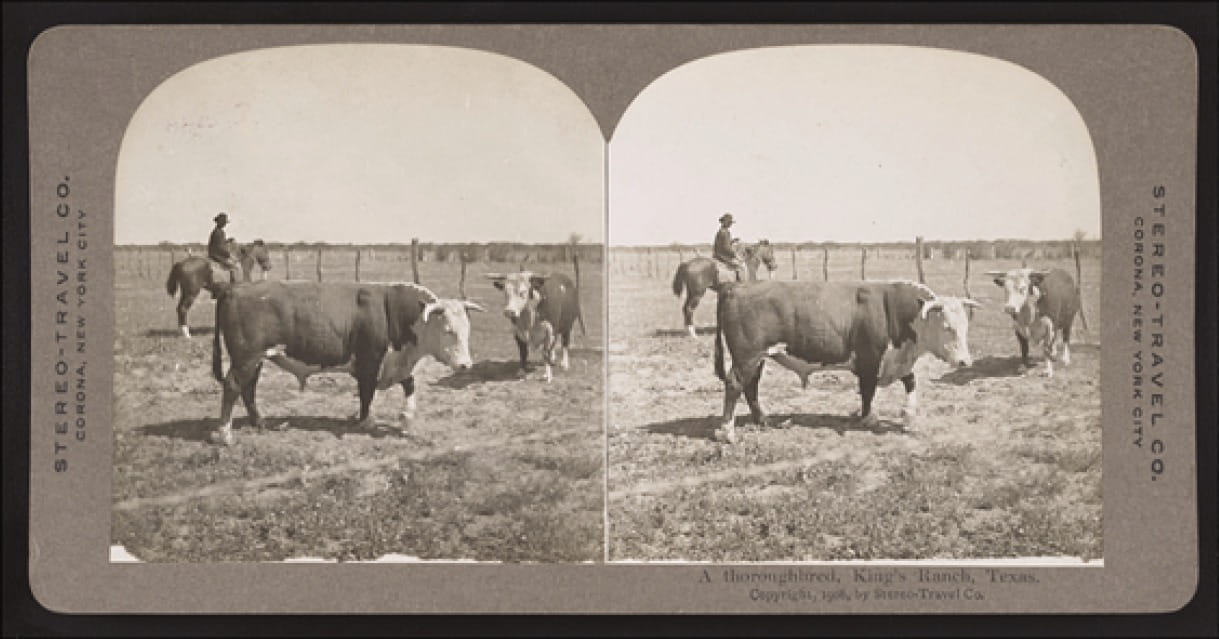7 Chapter III
Transformation
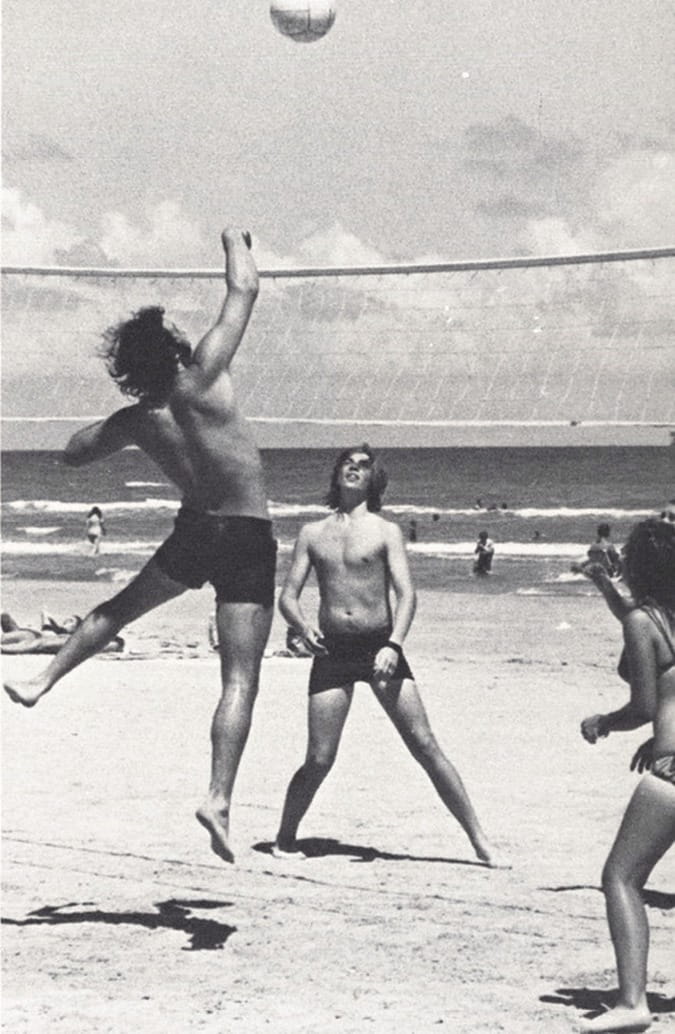
Islanders Play Volleyball (Circa 1970) Special Collections and Archives, Mary and Jeff Bell Library, Texas A&M University-Corpus Christi
Texas A&I University-Corpus Christi
On June 10, 1971, Texas Governor Preston Smith (1912-2003) signed a bill establishing Texas A&I University-Corpus Christi.[i] The signing took place in the newly restored library on Ward Island. This building had sustained considerable damage as many of the glass panels had been broken and over 10,000 volumes of the collection were exposed to water during Hurricane Celia.[ii] Less than a year later, the library and the university would be starting anew. The new A&I name and organizational control would become effective in the fall of 1973. In many ways, Hurricane Celia set in motion the events that led to the signing of this legislation to transform UCC into a sister university of Texas A&I University-Kingsville and Texas A&I University at Laredo which was being operated as a university center under A&I-Kingsville.
House Bill 275 and Senate Bill 131 were both filed during the 1971 legislative session to establish an upper-level university in Corpus Christi. Under the agreement, the BGCT would continue to provide funding for UCC during a transition period. Corpus Christi voters approved a $1.5 million bond package to pay off UCC’s debt and purchase the campus from the BGCT.[iii] Additionally, private donations totaling $1.8 million were raised in support of a public institution.[iv] These efforts to ensure that the university was positioned to succeed would set the tone for a close relationship between the community and its new public university.
Texas A&I (Kingsville) had initially opposed any plan for a public institution of higher education in Corpus Christi, as A&I contended it would create competition. Kingsville argued they were capable of serving the area’s needs and that the proximity of Corpus Christi to Kingsville (approximately 40 miles) meant that a state-supported university there would be a duplication of services and thus a waste of state resources. Texas A&I became supportive of, or at least stopped opposing, the plan after it was determined that the public university at Corpus Christi would join with A&I in a university system.[v]
Several important actions were taken in preparation for Texas A&I University-Corpus Christi. In April 1972, the Coordinating Board created an Office of the Chancellor to oversee the three A&I campuses. While the post was not immediately filled, the A&I Board of Regents, instructed the President of A&I-Kingsville, James C. Jernigan (1914-1996), to provide oversight to the incoming administration at A&I-Corpus Christi. He would be named Chancellor in 1973.[vi]
Dr. Jernigan earned his bachelor’s and master’s degrees from North Texas State College (University of North Texas), and a doctorate from the University of Chicago. Jernigan held several positions at Kingsville including Director of Student Personnel and Associate Professor of Education. He was appointed Dean in 1950 and President in 1962. The library at Texas A&M University-Kingsville was named after Jernigan in 1968, and he was named professor emeritus in 1987.
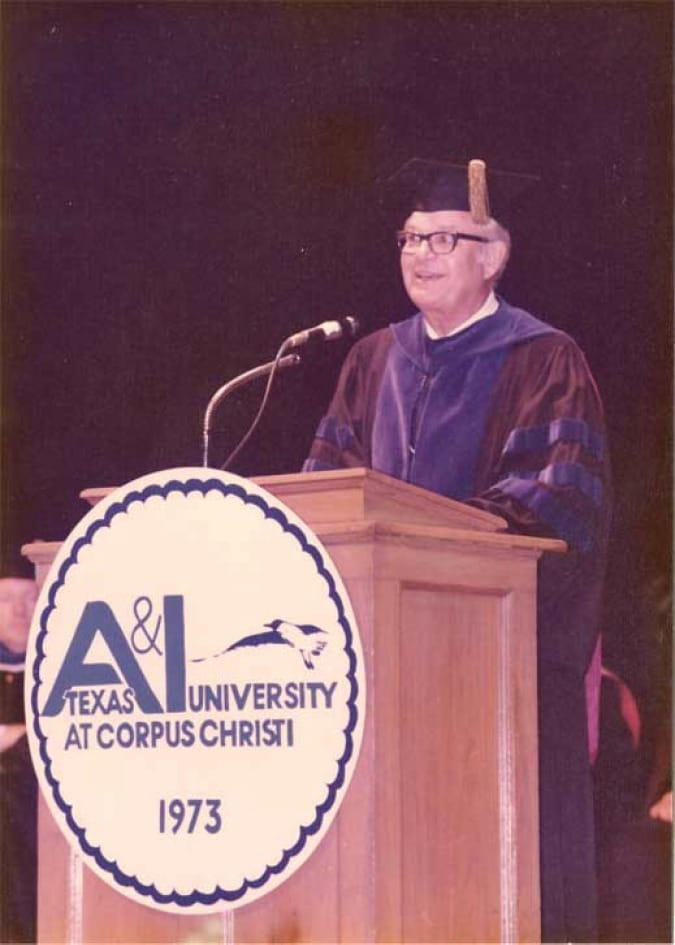
President James C. Jernigan
Texas A&M University-Kingsville Archives
A Higher Education System
With the creation of the Office of the Chancellor, the three A&I universities were organized the University System of South Texas.[vii] This organization allowed for more coordination in areas such as degree offerings and budgeting. It was particularly important when seeking annual funding and approval for special items from the state legislature. Systems allow for efficiencies in many regards but add an additional organizational layer. They can also can create power struggles among institutions.
In the late 1960s and 1970s, “systemization” became common practice in Texas as the state’s university systems expanded, particularly with the University of Texas System and its largest campus in Austin. Arlington State College left its affiliation with Texas A&M University to become part of the UT System in 1965 and was renamed The University of Texas at Arlington (UTA) in 1967. Also that year, a component school of UT–Texas Western College of The University of Texas–was renamed The University of Texas at El Paso. The University of Texas System was further expanded with the founding of three new universities in 1969: UT Dallas, UT Permian Basin, and UT San Antonio. In 1979, Tyler State College joined the system as UT Tyler. In addition to these universities, the UT System includes health science centers, medical schools, and UT Rio Grande Valley formed from the merger of UT Pan American and UT Brownsville in 2015.[viii]
Changes in the organizational structure of the university systems in Texas would have a bearing on the Island University on several occasions through its history. Most importantly, expansion of the Texas A&M University System would have a profound impact on the Texas A&I universities. [ix]
The push for systemization would include other Texas institutions as well with a strong bearing on how universities in the state are organized. With only two exceptions–Stephen F. Austin University, and Texas Southern University–each of the other public universities in Texas belongs to a system of higher education. Texas Tech University, The University of North Texas, Texas State University, and the University of Houston all maintain systems with multiple institutions under the governance of a board of regents and an executive officer titled as chancellor. Organizational changes continue to the present.
In 2021, Texas Women’s University transitioned from an independent university into a system with branches in Dallas and Houston organized as independent campuses.[x] Also in 2021, Midwestern State University joined the Texas Tech University System.[xi]
Among the South Texas Universities
With the change to a public university and as a member of the A&I system, the Island University was under a much different governance structure than UCC. The system would now need to consider the academic offerings at the different campuses to determine how those programs fit with the boarder offerings at the sister institutions. Major initiatives and building projects would also be deliberated by the A&I Board of Regents. With the change to a public school, student tuition was lower as overall costs would now be supplemented though state appropriations. The core mission no longer included ministerial education but rather focused on the needs of underserved students primarily from South Texas. All of the A&I universities would serve large Hispanic populations. The focus on different student profiles was a distinctive change as the Island University would later have a plurality of Hispanic students and become a Hispanic-Serving Institution (HSI).
Texas A&I Kingsville had been founded in 1925 as South Texas Normal School, to provide qualified teachers in the region. Kingsville community leaders had lobbied for over two decades for passage of enabling legislation and funding for the college. Political reluctance, including two vetoes of enabling legislation, had delayed its founding. World War I further delayed initial funding even after the enabling legislation had been approved. The community was supportive of the college and several residents donated land for the campus.[xii]
Since its founding, Texas A&I Kingsville worked to serve the large Hispanic population of South Texas. Like UCC, the institution had changed names before the first student entered a classroom, taking the name of South Texas State Teachers College. The early names of the college emphasized the important mission of educating teachers, a particularly great need in South Texas. Initiatives at Kingsville included a program in ethnic studies and a long-standing program to promote bilingual education through teacher preparation. The prominence of nearby King Ranch enabled agricultural and wildlife programs to also become hallmark offerings.[xiii]
Daniel Whitney Halladay (1920-1980) was named president of A&I-CC. Halladay was previously the President at East Texas State University (ETSU) (later re-named Texas A&M University-Commerce) where he served from 1966-1972. Halladay, a native of California, held a B.A. from Pomona State (Cal Poly Pomona), an M.A. from Claremont University, and an Ed.D. from Columbia University in New York.[xiv] Halladay had built his career through stints at the University of Florida, Pomona College in California, University of Arkansas, and Columbia University.[xv] Halladay had resigned as ETSU president in 1972 upon the death of his ex-wife, Pat, by suicide.[xvi] The death took place at the President’s Home on the campus following their recent divorce.[xvii]
Halladay had led East Texas State University during a time of rapid enrollment increases and oversaw a large construction program on campus. ETSU grew its enrollment from less than 7,000 to almost 9,000 during his six-year tenure. He would also grow the graduate offerings of ETSU.[xviii] Halladay oversaw similar enrollment increases and construction projects during his leadership of A&I-CC. In the first month of his tenure, Halladay stated, “We will build a university of stature and reputation that we think this community will be proud of.” Halladay insisted that faculty be of high quality and adopted the slogan of “On to excellence” for a new development campaign.[xix]
Halladay faced an immediate need for funding to purchase the campus from the BGCT for the transition to occur. Surprisingly, Governor Smith vetoed a $1.5 million appropriation to purchase land, buildings, and equipment from the BGCT. Smith had understood that the state would not be liable for the cost of the campus.[xx] Halladay appealed to the Corpus Christi community to support their new public university by raising these critical funds.[xxi] In December 1972, a bond package was presented to Corpus Christi voters that included funds for the A&I-CC campus. Bonds were approved with 14,265 votes (78%) in favor to 3,979 votes against. This support allowed the change to state sponsorship occur without additional delay.[xxii][xxiii]
USST Chancellor Halladay, Vice-President of the USST Board of Directors Laurence A. McNeil, A&I-CC President Jernigan (1989)
Texas A&M University-Kingsville Archives
During the transition from UCC to A&I-CC, some A&I offices such as admissions, operated on the Ward Island campus alongside UCC. The President’s office and other administrators held temporary offices in the United Saving Bank Building on Alameda Street. On campus, several dormitories were converted into office space.
UCC offered its last courses in the summer of 1973 with 12 faculty teaching approximately 30 courses including independent studies in an abridged summer term.[xxiv] The final UCC commencement ceremony had 32 graduates. A few UCC seniors would take religion courses temporarily offered by A&I-CC to finish their degrees.[xxv]
In September 1973, students of Texas A&I University-Corpus Christi would begin their classes on Ward Island. As an upper-level university, the new focus would be on providing transfer students with at least 60 credit hours to complete an undergraduate degree. In the first year as A&I-CC, a range of majors across four degrees–Bachelor of Business Administration, Bachelor of Arts, Bachelor of Science, and Bachelor of Music–were offered at the undergraduate level.[xxvi] A&I CC would initially offer four graduate programs, all through the College of Education.[xxvii] These offerings were a shift from UCC, which provided only undergraduate degrees, and would mark the beginning of many graduate offerings added over the coming decades.
Undergraduate students would now begin their studies elsewhere and transfer to the Island University having already completed their freshman and sophomore years. Many would study at Del Mar College, south of downtown Corpus Christi, to earn their lower-level credits before transferring as many students still do today. The new graduate offerings would allow individuals an opportunity to earn an advanced degree in Corpus Christi for the first time.[xxviii]
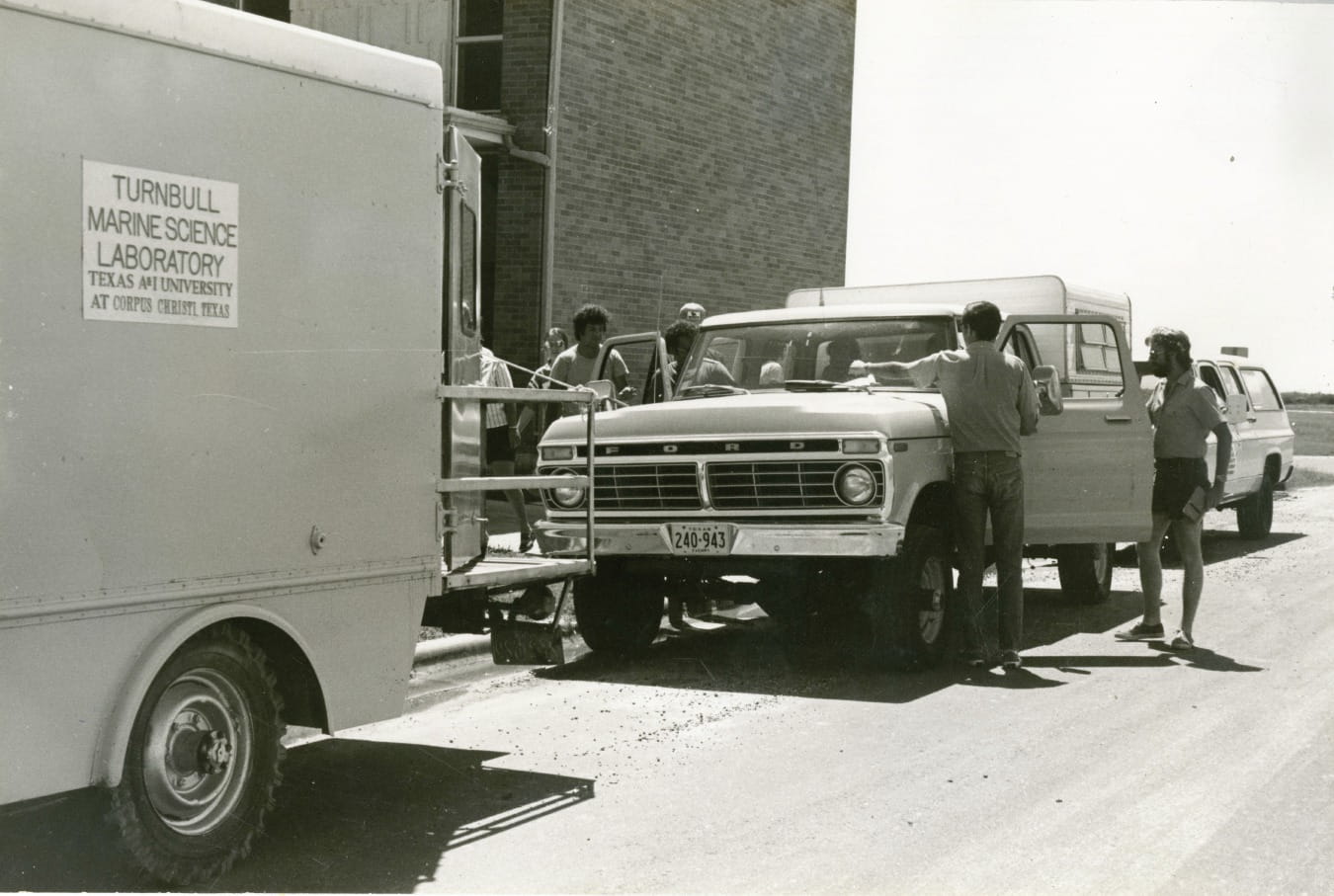
Texas A&I-Corpus Mobile Science Laboratory (n.d.)
Special Collections and Archives, Mary and Jeff Bell Library, Texas A&M University-Corpus Christi
These changes also meant that most students commuted to campus and were more likely to be older, working professionals.[xxix] The absence of a large residential population changed the feel of the campus and a different campus life emerged. Two dormitories did remain available on a first-come, first serve basis. Fraternities, sororities, and athletics programs were not a part of the campus life during this period.[xxx][xxxi]
Enrollment at A&I-CC would quickly increase even though the institution was no longer offering admission to freshman and sophomores. In the beginning of the 1974-1975 academic year, the Island University had an enrollment of 1,603 students, easily surpassing prior enrollment under UCC.[xxxii] This indicates that the demand for higher education was present, yet for a variety of reasons, UCC was not fully meeting demand.
Programs offered by A&I-CC spanned numerous disciplines across the four colleges: Arts and Humanities, Science and Technology, Education, and Business Administration. Night and weekend classes, as well as correspondence courses, were offered to appeal to working students. The organizational structure called for each of the four colleges to be led by a Dean. Within each college, departments were led by a faculty chair.[xxxiii]
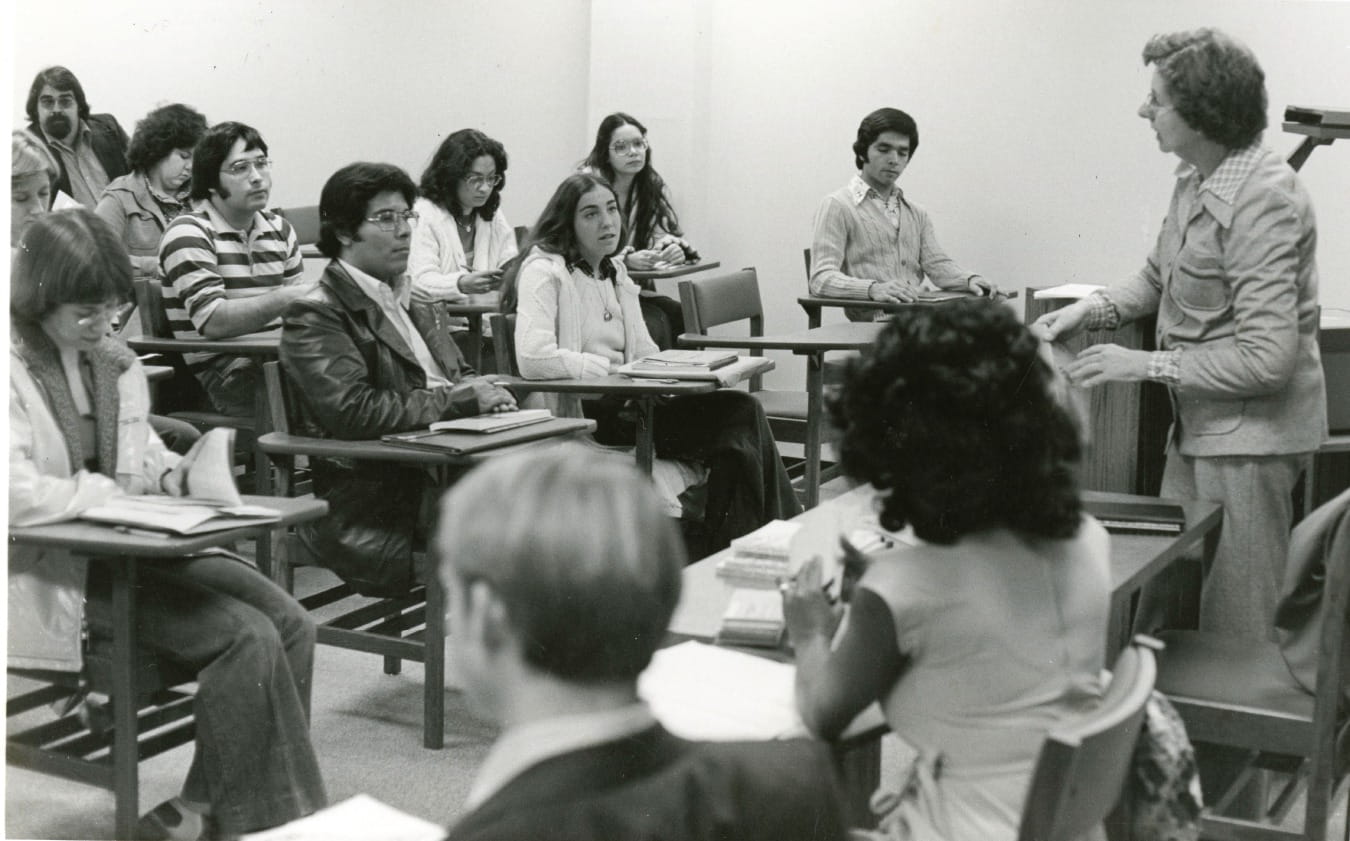
Dr. Miriam Wagenschein Lectures in Class (n.d.)
Special Collections and Archives, Mary and Jeff Bell Library, Texas A&M University -Corpus Christi
In 1973, Dr. Miriam Wagenschein (1922-2011)[xxxiv] was selected as dean of the new College of Arts and Humanities. The college would grow to have the largest number of faculty and degree program offerings. A Stanford University-educated sociologist, Dr. Wagenschein taught the first course in what would later be known as women’s studies. Dean Wagenschein retired in 1998 after a 25 year career at the Island University. Two endowed professorships at TAMU-CC bear her name–one in sociology and the other in gender studies–furthering the important work she began.[xxxv]
Several building projects were undertaken during the A&I period that cumulatively would involve $20 million in facility construction over almost a decade.[xxxvi] This construction program would transform the campus and include many of the buildings that are still prominent features on the campus today. In 1975, a new 64,000-square-foot classroom building was constructed. This first building constructed after becoming a public institution was named Corpus Christi Hall in recognition of the support citizens had shown in funding the transition to a public institution and their ongoing contributions. President Halladay noted in the naming of the building, “The people of this city made our university possible.” Other early projects included a new field-house, handball courts, and remodeling of the administration building.[xxxvii] The change from a four-year university to an upper-level institution with graduate programs also altered the types of campus facilities needed. Less student housing was necessary, but the increased enrollment warranted additional classroom and office space. Miller Hall, a former dormitory for women, was remodeled for office and classroom space in 1975 with its name changing to Faculty Center II.[xxxviii] A new science building, fine arts building, and library were all constructed at A&I-CC. The science building was a 60,000-square-foot facility built at a cost of $2.5 million.
Corpus Christi Hall (Circa 1976)
Special Collections and Archives, Mary and Jeff Bell Library, Texas A&M University-Corpus Christi
The 93,800-square-foot Fine Arts Building cost $2.6 million and includes a 300-seat performance hall, theater, outdoor sculpture garden, photo lab, vocal and instrumental rooms, classrooms, offices, and a television studio. With the addition of this facility, art majors could be supported.[xxxix][xl] Within the building, the art gallery is named for Sylvan Weil (1888-1967), in recognition of a gift made by his wife, Ruth Weil, as a memorial to her husband. Mr. Weil was a Corpus Christi businessman and supporter of the arts.[xli]
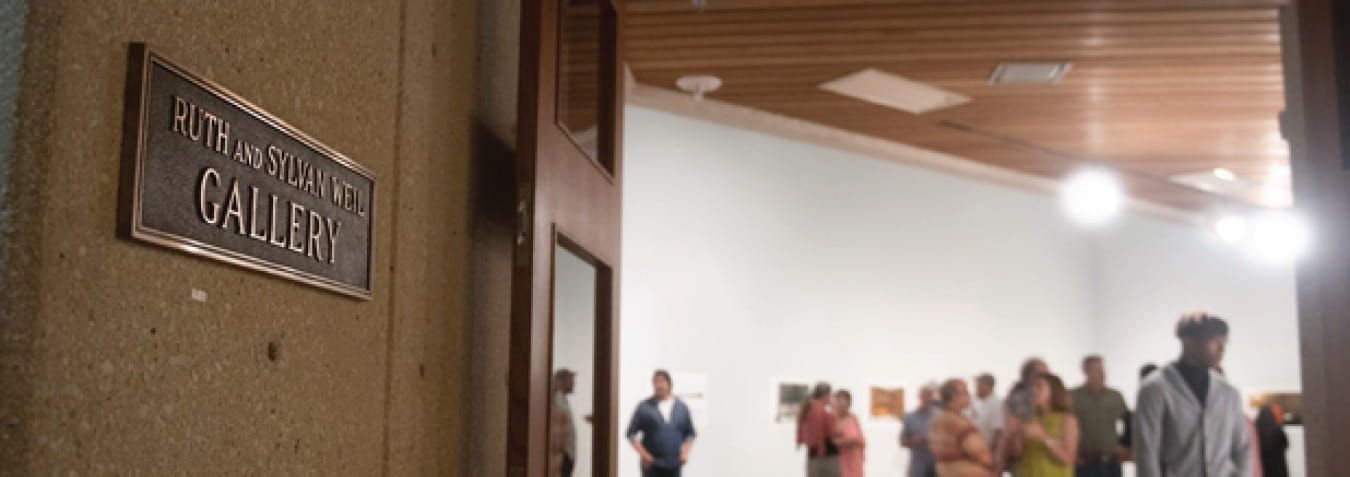
Ruth and Sylvan Weil Gallery (2017)
Texas A&M University-Corpus Christi
Construction of the Science Building (Circa 1977)
Special Collections and Archives, Mary and Jeff Bell Library, Texas A&M University-Corpus Christi
With construction of a new library, the old library, known as the “round building,” was repurposed to be used as an administration building. The new library would be 106,000 square feet and house up to 300,000 volumes.[xlii] The facility is named after Mary and Jeff Bell who gave a $1 million gift for the library. Jeff Bell (1921-2011) was a retired bank president from Portland, Texas.[xliii] The dedication of these three buildings on March 23, 1979 was presided over by Texas Governor Bill Clements who noted, “We must never forget our goal, our duty, and this is to give our citizens the basic building blocks needed to develop meaningful careers of their choice.”[xliv]

Student Micah Knupp Performs as Mark Cohen in a Production of Rent (2016)
Texas A&M University-Corpus Christi
Halladay would be named Chancellor of the three A&I campuses in 1976 and remain in the position as the system itself was renamed to University System of South Texas. On July 12, 1980, Halladay unexpectedly passed away in his sleep while visiting family in Mississippi. Halladay was 59 at the time of his death, and news of his loss was a shock to the community.[xlv] Halladay proved an able administrator and worked to grow higher education in Texas at two universities and as the head of a university system.
Except for the short-lived name of Arts and Technology College, the Island University would bear the Texas A&I University-Corpus Christi name for the fewest number of years among its several names. Under Halladay and his successor, Dr. Barney Alan Sugg, the transformation from a private to public institution, the shift in mission, and a sharpened focus on upper-level coursework greatly changed the nature of the university. This change also set in motion the growth and expansion that defined the decades to follow. Many new traditions would form in the next decades and build an identity that is much different than that of UCC. The name change also ushered in a tradition of referring to the institution as the “Island University” in marketing literature and by students and faculty.[xlvi] The distinctive nature of an island-based campus would remain a positive attribute for students in selecting a location for their studies.
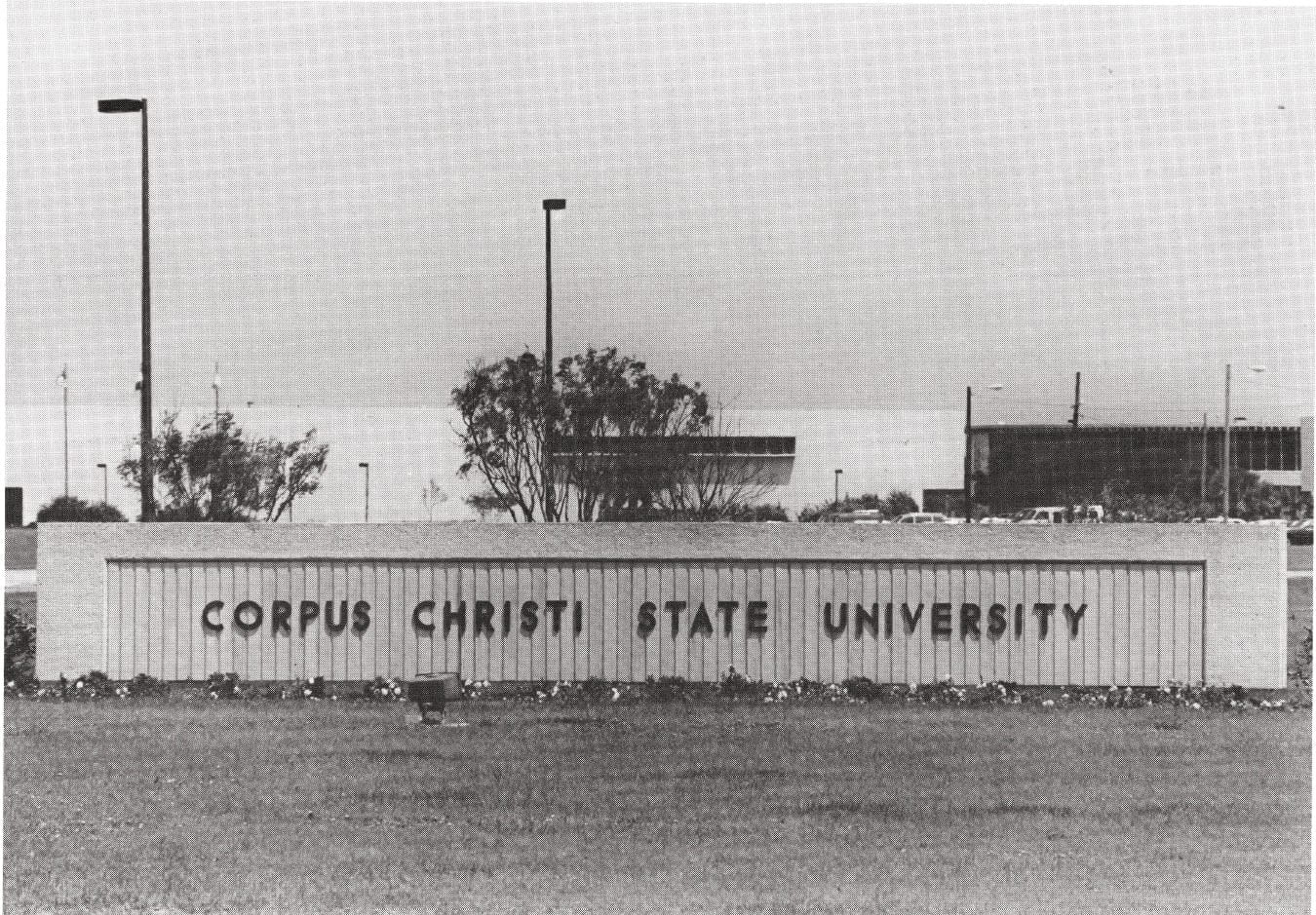
Corpus Christi State University Entrance Sign (Circa 1978)
Mary and Jeff Bell Library, Special Collections and Archives Department, Texas A&M University-Corpus Christi
Corpus Christi State University
Another name change marked the beginning of the 1977-1978 academic year as Corpus Christi State University (CCSU) became part of the newly founded University System of South Texas (USST). Governor Dolph Briscoe (1923-2010)[xlvii] signed the bill authorizing the change on May 27, 1977.[xlviii]
On August 22, 1978, CCSU student Barbara Smith broke a bottle of champagne on the school’s entrance sign located on Ocean Drive to mark the official change.[xlix] President Sugg put up the first letter of the new name on the entrance sign. Each of the college deans then followed by adding letters.[l]

Corpus Christi State University Administrations Affix Letters to the Entrance Sign for the Newly Re-named University (1977)
Mary and Jeff Bell Library, Special Collections and Archives Department, Texas A&M University-Corpus Christi
CCSU was not the only name under consideration. Students and board members alike took positions on what the new name should be. The board of directors of Texas A&I-Corpus Christi had narrowly approved, in a 4-3 vote, to recommend to the Texas Legislature that the name of University of Corpus Christi be used.[li] Had the UCC name been approved, the university would have reverted to the same name that was in use while it was a private school. Concerns were expressed over the UCC name as it had ultimately not been successful. Others desired to keep the A&I name intact as the Kingsville campus had national recognition due to their successful football program. University of the Gulf Coast was also proposed.[lii] Legislators, spearheaded by Texas State Senator Carlos F. Truan, Sr. (1935-2012), drafted the bill to bestow the name Corpus Christi State University.[liii]
A longtime advocate of the university, Sen. Truan served for 33 years in the Texas Legislature, first in the House of Representatives from 1969-1976 representing Nueces (Corpus Christi) and Kleberg (Kingsville) Counties. He was then elected to the Texas Senate in 1977 and would retire from the upper chamber in 2003 having been its Dean, or longest serving member. Truan was a force to be reckoned with in the Senate. He once filibustered a bill for 20 hours and would often wear his white tennis shoes to the Senate floor as a threat to filibuster a measure on which he disagreed.[liv] The Senate district Truan represented included Brooks, Jim Wells, Kennedy, Kleberg, Nueces, San Patricio, Willacy, and part of Hidalgo counties. As such, he represented both CCSU and A&I-Kingsville. He was an important figure in the organization of these universities and worked to shepherd legislation on their behalf through the legislature.
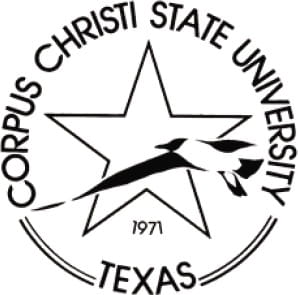
Seal of Corpus Christi State University (Circa 1978)
Mary and Jeff Bell Library, Special Collections and Archives Department, Texas A&M University-Corpus Christi
Truan was born in Kingsville and graduated from Texas A&I (Kingsville) in 1959. He and his family resided in Corpus Christi where he owned an insurance business.[lv] Truan passed away in 2012 at the age of 76.[lvi] The Carlos F. Truan Natural Resources Building at Texas A&M University-Corpus Christi is named after the Senator. The 100,000-square-foot facility opened in 1993 and is located west of Island Drive. It was attained through a $10 million legislative appropriation spearheaded by Truan. Under a unique arrangement, the building houses several state agency offices focused on natural resources in addition to university offices.[lvii] A unique entity housed in the facility is the National Spill Control School. The school began by offering courses on oil spill control in 1977 and has steadily added training courses over its history. The school was included in the Oil Pollution Control Act of 1990 and has been recognized as a leading entity in this field.[lviii]
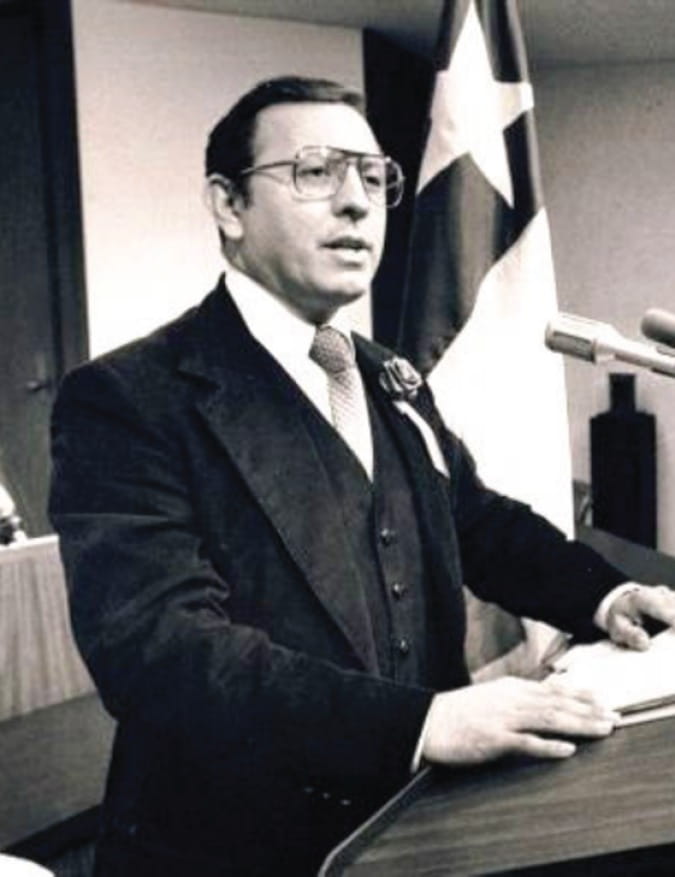
Texas State Senator Carlos F. Truan, Sr.
Texas A&M University-Kingsville Archives
Adjacent to the NRC is the Conrad Blucher Institute for Surveying & Science. This institute is named for Conrad M. Blucher (1885-1977), an important figure in the development of Nueces County. Conrad’s grandparents, Anton Felix Hans Hellmuth von Blucher and his wife Maria, came to Texas in 1849 from their native Germany. Von Blucher was educated at the University of Berlin in civil engineering, law, and languages. The Bluchers settled in Nueces County on a plot of land that for a time was known as Blucherville due to the large number of their family’s homes occupying the area. Blucherville once had a prized view of Corpus Christi Bay from a highpoint in the bluffs west of the downtown area. The view of the bay is now obstructed from Blucherville by downtown office towers. Blucher Park in Corpus Christi occupies part of this area, while three of the impressive family homes in the adjacent neighborhood are used as professional offices. These homes are among the oldest residential structures in their original location within the city.[lix]

Nueces Country Map, Blucher Engineering Co. (1950)
Charles H. F. von Blucher Family Papers, Collection 4, Mary and Jeff Bell Library, Special Collections and Archives Department, Texas A&M University-Corpus Christi
The family’s gift to the university would reflect their profession. Three generations of Bluchers would serve as Nueces County surveyor, totaling over 100 years of service. After beginning in 1849, Felix von Blucher would be succeeded by his son, Charles, in 1882. Conrad would succeed his father in the post in 1934, retiring in 1954. In 1975, Conrad and his wife, Zula, dedicated their estate to CCSU to foster the study of surveying. Upon the death of Mrs. Blucher in 1986, the $2 million gift funded the institute which bears his name. The Conrad Blucher Institute was dedicated on May 17, 1987 and soon offered courses in surveying.[lx]
The Blucher Institute would transition from traditional surveying technics to Geographic Information Systems (GIS) as the technology rapidly advanced. Degree programs at the undergraduate, master’s, and doctoral level are now offered in the field of GIS. Further, through its several laboratories, the institute works with other entities on campus to conduct research. Notably, the Coastal Dynamics Lab conducts monitoring of the Gulf of Mexico.[lxi]
A small yet profound monument on Ward Island pays tribute to this program as well as one of its long-time directors. Upon the retirement of Dr. Gary Jeffress in 2018, a permanent GIS position “Jeffress 2018” was published in the National Geodetic Survey database. This point serves as a geodetic control point in the National Spatial Reference System (NSRS).[lxii]
Leadership
CCSU President Halladay was named the chancellor of the newly formed USST and located the headquarters for the system in Corpus Christi. Halladay’s tenure as chancellor would be short lived, as he unexpectedly passed away in 1980.[lxiii] [lxiv]
Dr. Duane M. Leach (1935-) would be named the next chancellor of the University System of South Texas. Leach had become president of A&I Kingsville in 1977 and would move the USST headquarters to a property adjacent to the King Ranch, three miles from the Kingsville campus.[lxv] The system offices would be in the former home of Robert R. (Bobby) Shelton (1935-1994), a descendant of Richard King, founder of the King Ranch. Under the arrangement, five rooms totaling 5,000-square-feet of the home were remodeled to serve as administrative offices.[lxvi]
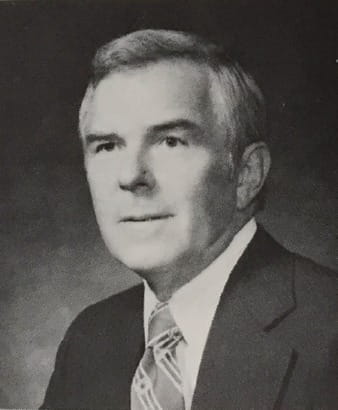
Dr. D. Whitney Halladay (Circa 1980)
Alumni Update, December 1980. Special Collections and Archives, Mary and Jeff Bell Library, Texas A&M University-Corpus Christi
Dr. Duane Leach (Circa 1980)
Alumni Update, December 1980. Special Collections and Archives, Mary and Jeff Bell Library, Texas A&M University-Corpus Christi
Richard King (1824-1885) and his wife Henrietta Chamberlain (1832-1925) built one of the largest ranches in Texas. King, a native of New York, had little formal education as he worked on riverboats from a young age after breaking an apprenticeship and fleeing westward. King became a riverboat pilot at age sixteen and later a partner in two riverboat companies that operated on the Rio Grande River.
A speculator by nature, King bought significant portions of undeveloped land in South Texas. His business interests were wide yet integrated in a manner that allowed for maximization of profits such as through his development of the means to transport ranch products to large markets. King would be a strong advocate for South Texas to have access to ports.[lxvii][lxviii]
Henrietta would be instrumental in building the ranch for the decade following the passing of her husband. She would transfer the responsibilities of running the ranch to her son-in-law, Robert J. Kleberg, Sr. (1853-1932) in 1895. King Ranch remains a working ranch with over 825,000 acres and business interests spanning cattle ranching, natural resources, farming, recreational hunting, and luxury goods. The brand of the King Ranch, the “Running W”, is a widely recognized symbol. Products spanning from pickup trucks to restaurants carry the brand as a badge of quality. The King and Kleberg families have donated to numerous causes in South Texas including for the establishment of what would become Texas A&M University-Kingsville. The City of Kingsville was established in 1904 on property granted by Kle-berg and is named in honor of Richard King.[lxix]
“A Thoroughbred” King’s Ranch, Texas (1908)
Library of Congress, STEREO U.S. GEOG FILE-Texas-Kingsville
While office space was generously provided by the King family, the arrangement moved the USST offices from Corpus Christi to a location that was closer, both physically and symbolically, to Kingsville. Leach’s immediate past position as the A&I (Kingsville) president likely entered into the equation. His sentiment towards Kingsville suggested an unequal positioning of universities within the USST. In 1977, while serving as A&I-Kingsville’s President, Leach defended the new organization as a system noting, “Texas A&I as the exceptional flagship of the system and expect it to remain so in the future.”[lxx] The struggle over position within the system would often be framed in relative terms. A common argument in favor of the arrangement was that the system provided more strength in sum than the constituent campuses would on their own. However, the sentiment that one USST university was more equal than others would be present periodically as the system members found themselves linked by a common organizational structure, culture, and geography.
Leach would resign to become the president of the University of Texas-Permian Basin in Odessa in the fall of 1983.[lxxi] Before leaving, Leach commissioned a report on the higher education needs of South Texas. Among other findings, the report noted that citizens of the region felt there was a lack of graduate and professional programs. At the time, the region did not have a medical, veterinarian, law, or pharmacy school. Leach reflected that he felt that the banning together of the three A&I universities into USST had benefited each school by collectively raising their profiles. He further noted that CCSU was mainly serving the needs of its immediate geographic area and that the more professional centered programs, such as computer science and business administration, were in high demand.[lxxii]
The need for additional professional and graduate education was noted in 1987 during committee hearings of the Texas Legislature. When compared to North Texas, in particular, the USST and other South Texas universities offered few doctoral and graduate level educational options.[lxxiii]
In 1983, Dr. Lawrence (Larry) K. Pettit (1937-) was named the next Chancellor of the University System of South Texas. Pettit, a native of Montana, earned degrees at the University of Montana (B.A.), Washington University in St. Louis (M.A.), and the University of Wisconsin, Madison (Ph.D. in Political Science). He worked in higher education with faculty stints at Pennsylvania State University and Montana State University.
Pettit had also pursued a career in politics. After working for members of Congress in Washington, he led the campaign to elect Thomas L. Judge (1934-2006) as governor of Montana. Following the campaign, he worked on the governor’s staff. Governor Judge would name Pettit as the first Higher Education Commissioner for Montana upon creation of the position by a new state constitution adopted in 1972. Pettit held this position for six years and oversaw the Montana University System which consisted of six campuses. He unsuccessfully ran for U.S. Representative from Montana in 1980.
Left to Right: Mrs. Mary Lewis Kleberg; Dr. Larry Pettit; Mrs. Libby Pettit; Mrs. Franklin; A&I Kingsville University President Dr. Billy “Bill” Franklin
Texas A&M University-Kingsville Archives, A2017-074.0060
At the time of his appointment to lead USST, Pettit was serving as Associate Commissioner of the Coordinating Board of the Texas College and University System.[lxxiv] Pettit took the job at the Coordinating Board with the understanding that he would like to return to lead a university or university system. The USST chancellor position provided this opportunity. Upon his departure from USST he would serve as the head of Southern Illinois University from 1986 to 1991, and then as President of Indiana University of Pennsylvania, ultimately retiring in 2003. Pettit remains an advocate for higher education during his retirement in Montana.[lxxv][lxxvi][lxxvii]
Pettit was ambitious and desired USST to increase its national and international presence. He considered the job to be less stressful than his prior positions and used his energies to engage in speaking and writing engagements that elevated the system in notable circles. Pettit also secured agreements with Honduras, El Salvador, and Guatemala to allow their students to study at USST universities.
Pettit would make headlines by stating that South Texas was not receiving similar resources in the way of professional and graduate education when compared to other areas of the state. He worked towards treating Hispanic universities in a similar manner to majority Black institutions (Historically Black Universities or HBU’s) for purposes of increased support to offset systemic disparities. This was an important consideration and part of a larger push for increased resources to be devoted to USST schools. In response to a larger movement, additional doctoral programs were started in South Texas at the USST institutions and Pan American University.
This movement included a lawsuit filed by The League of United Latin American Citizens (LULAC). LULAC v. Richards et al. was a class-action lawsuit filed in 1987 that charged the state with discrimination against Mexican Americans in South Texas due to inadequate funding of higher education in the region. In response, the Texas Legislature passed the South Texas/Border Initiative in 1989 to improve institutions across South Texas including CCSU. The changes seen in the system re-organization across Texas higher education were at least partly in response to this lawsuit and the overarching concern over equity. The South Texas/Border institutions received over $880 million in special item funding from 1990 through 2003.[lxxviii][lxxix]
A 2003 report by the Texas Higher Education Coordinating Board to the Texas House of Representatives Border and International Affairs Committee again noted the lack of a law, medical, dental, or professional school in the region.[lxxx] A pharmacy school named for former State Representative Irma Rangel (1931-2003) from Kingsville would open there in 2006. However, the pharmacy school is part of the Texas A&M University Health Science Center, not TAMU-Kingsville. The College offers a Doctor of Pharmacy (PharmD) in a four-year degree track. There is a partnership to allow pharmacy students to simultaneously earn a Master of Business Administration Degree from TAMU-Kingsville. Further, the creation of UT-Rio Grande Valley would bring a medical school to the region in 2013.
Dr. Barney Alan Sugg (n.d.)
Special Collections and Archives, Mary and Jeff Bell Library, Texas A&M University-Corpus Christi
During this period, CCSU would also have a new president in Barney Alan Sugg (1938-). He was serving as Vice President for Academic Affairs at Corpus Christi in 1972 having held a similar position at East Texas State University. Sugg joined Halladay in Corpus Christi after working under him in student affairs at Arkansas and then East Texas State University. Sugg would become A&I-CC President upon Halladay’s promotion to Chancellor of the USST.[lxxxi]
The Sugg family enjoyed South Texas especially seafood and trips to beaches. Sugg took Spanish classes from Del Mar College to “better pronounce Hispanic names.” In 2008, President Sugg recalled that his daughters both grew up in Corpus Christi. For a time, the daughters raised horses and Sugg pulled a horse trailer with the family station wagon. In an in-depth interview, thirty-six years after leaving Corpus Christi, he noted the community support and pride for their new university. [lxxxii]
Sugg would serve as CCSU president for 13 years and for a period as interim USST Chancellor upon the departure of Pettit. He indicated at the time of the interim appointment that he was not interested in the Chancellor position and desired to remain CCSU president. However, he left CCSU to head the University of Arkansas System in 1990. A native of Arkansas, he enjoyed a long and favorable career growing that system from 30,000 to 70,000 students by his retirement in 2011.[lxxxiii]
In 1986, 3,855 students were enrolled at CCSU while Kingsville was the larger campus with 5,057 students during that same year.[lxxxiv] The CCSU campus was rapidly changing and modernizing. By 1978, only two of the original naval buildings remained and those were slated for removal to make way for additional parking lots and buildings. The Arts Department occupied one of the last two buildings while the other was the home of long-time maintenance worker Jake Saldana.[lxxxv] Programs at CCSU continued a steady expansion. In the late 1970s, the process for adding graduate programs in psychology, public administration, nursing, and computer science was initiated. Funding for these programs was not immediately approved, but they would all eventually become popular degree offerings.[lxxxvi] For undergraduates, a program in medical records was also planned.[lxxxvii]
Teacher education had been an important and successful program offering at UCC with an onsite kindergarten and first grade to assist with the training of teachers. CCSU expanded these programs for educating teachers by utilizing classroom experiences. The Teacher Training Institute became recognized across the state for quality teacher training.[lxxxviii][lxxxix] In a similar fashion, CCSU added a Teaching and Learning Center for Young Children in 1978. Operated through the College of Education, this program began the long-standing presence of elementary age children attending school on Ward Island. Today, the Early Childhood Development Center continues to serve in this capacity.[xc] The facility was named after Blanche Davis Moore in 1996. Blanche Moore Elementary School, another Corpus Christi Independent School District cam pus in the southern part of the city, is also named after Mrs. Moore in recognition of a real estate gift to build a school.
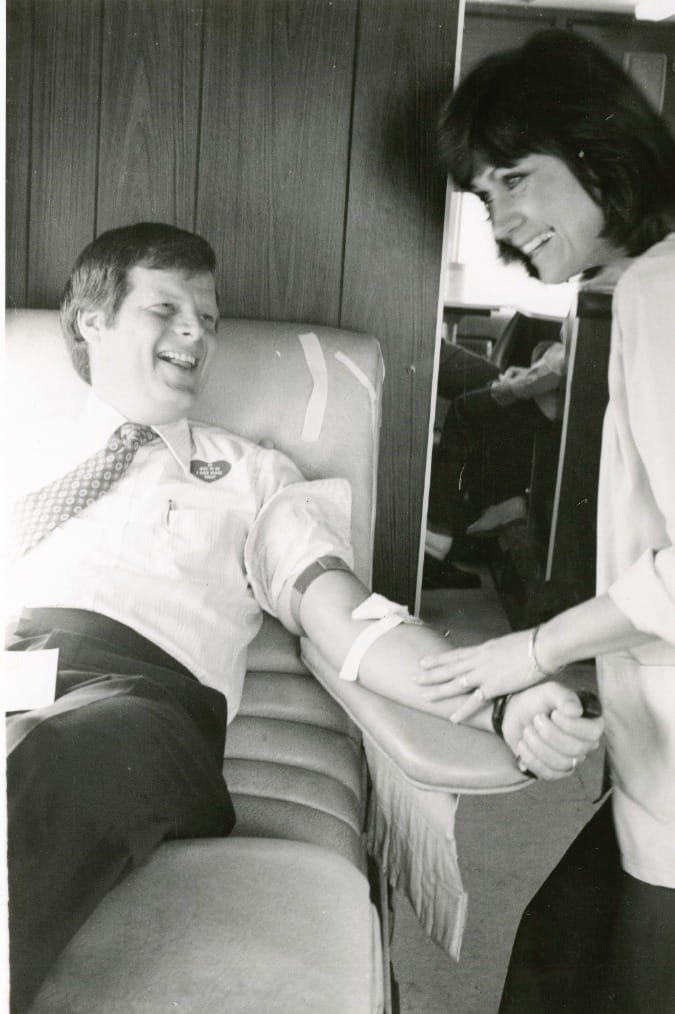
Dr. Barney Alan Sugg (n.d.)
Special Collections and Archives, Mary and Jeff Bell Library, Texas A&M University-Corpus Christi
Blanche Davis Moore (1904-1983) was a philanthropist whose estate funded The Allen Lovelace Moore and Blanche Davis Moore Foundation in 1993 primarily for the benefit of Nueces County children. Initial funding of the foundation came from the sale of 160 acres of the Moore’s farmland adjacent to South Padre Island Drive (SPID) much of which is now occupied by Moore Plaza Shopping Center.[xci] The Moore’s paid about $200 an acre for the property in 1944 from earnings off their North Beach arcade and concessions businesses. At the time of the purchase, the property was farmland located off Lexington Boulevard (later re-named SPID). Mr. Moore, who went by the nick name “Dinty”, rightly predicted that the property would one day be the center of Corpus Christi.
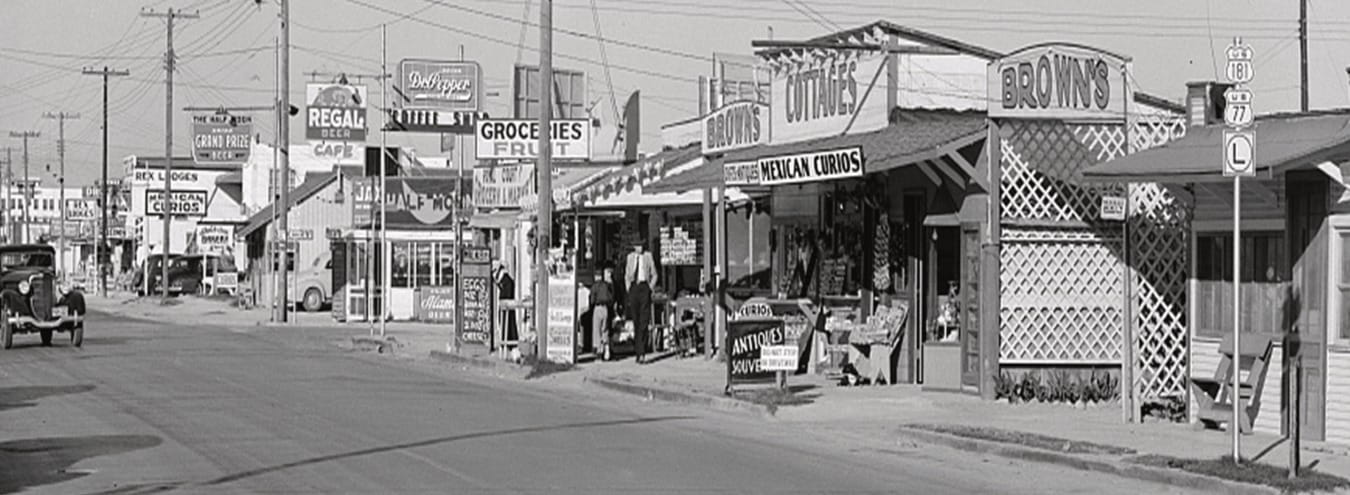
Main Street of North Beach Tourist District, Corpus Christi Texas (1939)
Lee Russell, Library of Congress. LC-USF34- 032251-D [P&P] LOT 596
The student profile during the CCSU years was older and more professionally focused than during the UCC years. The nature of the upper-level campus required students to have completed coursework previously.[xcii] Thus, the average age was higher when compared with four-year institutions.
With an average age of 30, CCSU had a student population that was well above the state-wide mean. Most students worked full-time, and many were enrolled in CCSU graduate programs. In the fall 1980 commencement, 217 degrees were awarded with 60 (27%) of these being master’s degrees.[xciii]
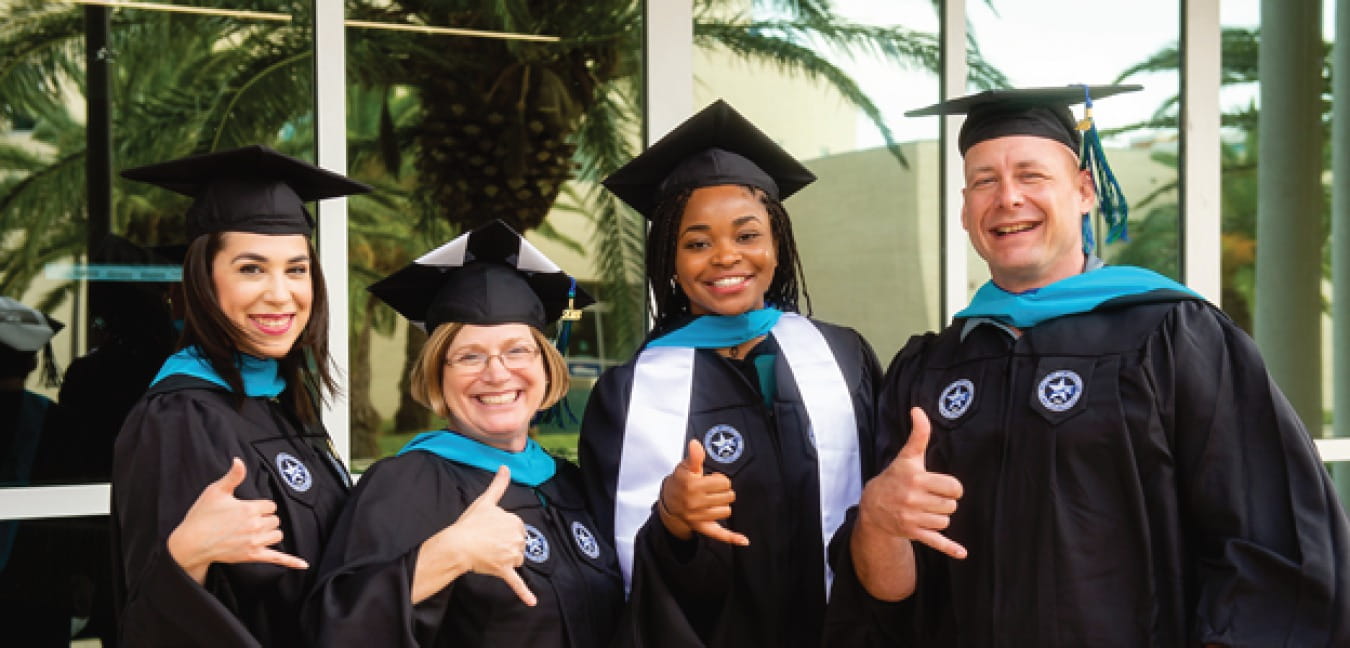
Students Celebrate the Completion of their Master’s Degree (2018)
Texas A&M University-Corpus Christi
Many CCSU students came from the surrounding area, as was the case for Ricardo L. Rodriguez. A navy veteran of the Vietnam War, Rodriguez attended CCSU after obtaining an associate’s degree from Del Mar College. He worked while attending school and was a first-generation college graduate. His accounting degree would prove an asset as he was elected Mayor of Robstown in 1980. Rodriguez would spend his career in public service and be selected as Chief Financial Officer for the Corpus Christi Independent School District. While Rodriguez was a stand-out alumnus, his story resonates with other graduates as many first-generation, veteran, employed, and older students would attend the Island University.[xciv]
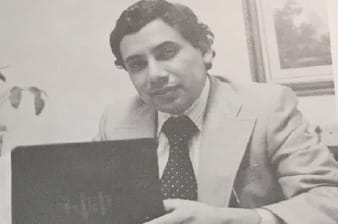
Hon. Ricardo L. Rodriguez, Mayor of Robstown, Texas (1980)
Alumni Update, June 1980. Special Collections and Archives, Mary and Jeff Bell Library, Texas A&M University-Corpus Christi
As the university changed its offerings, and upon expansion to again serve freshman and sophomores, the average age of students would decline, again shifting the profile of the student body. More students would choose to live on campus. Seabreeze Hall was opened in 1983 to house 80 students as Warren Hall held 84 students.[xcv] Two more residence halls were opened in the fall of 1984.[xcvi]
Re-organizations, Systemization, and Mergers, Oh My!
With the large expansion of the University of Texas System in 1969, administrators in Kingsville began to worry about the expansion of UT into South Texas. UT had considerable resources and name recognition. Any expansion or acquisition of an existing university by the UT System could lead to stiff competition for recruitment of students across the southern region of the state. One means of defense was to strengthen the existing USST system by attracting additional universities to join.
Pan American College in Edinburg, a border city in far South Texas, was unsuccessfully solicited to join USST as legislation was filed that would fold Pan American into the USST in 1987.[xcvii] While this effort failed, the attempt illustrated the push for systemization of the South Texas universities. Pan American would join the UT System as UT Pan American in 1989.[xcviii]
Different proposals materialized involving the organization of the Island University, other institutions in the region, and the university systems. In the mid-1980s, discussions over the organization of the South Texas Universities occurred. Larry E. Temple (1935-), Chairman of the Select Committee on Higher Education, issued a report recommending a merger of the Kingsville and Corpus Christi campuses into one university. The report went on to recommend that the headquarters of this new university be in Corpus Christi since it was the larger of the two cities and being an urban area likely allowed for more enrollment growth.[xcix]
Joining a larger university system was also a means to advocate for more equity for students and institutions in South Texas. A 1988 report indicated that the state spent $43 per student in South Texas versus $103 per student in the rest of the state. There were significant inequities present in facilities and academic programs because of this disparity.[c]
During this time, a plan for CCSU to become a comprehensive school was under discussion. Sugg was an advocate of expanding offerings to again include freshman and sophomores. However, this idea was met with resistance from A&I-Kingsville and Del Mar College. The enrollment at Kingsville peaked in 1975 at 7,641 but by the end of the decade dropped to 6,140. CCSU increased from 1,603 students in 1975 to 2,748 in 1979. This figure was well below some growth projections, notably the projection of 5,000 students by 1980 as made by Halladay in 1972 at the time of A&I-CC’s beginning.[ci] Kingsville officials expressed concern that increases at CCSU had come at their expense. Adding offerings at the lower level would potentially exacerbate Kingsville’s enrollment decline.[cii] Similarly, Del Mar College’s reluctance is not surprising as many local students attended the college as their preferred conduit for earning the 60 credit hours necessary to enroll at CCSU. Should CCSU offer lower-level courses, many of these same students may choose to begin their studies at CCSU as opposed to transferring at the roughly halfway mark in their undergraduate studies. In 1987, public hearings on the expansion of CCSU were held in Corpus Christi as the Texas Legislature was considering legislation on the matter.[ciii]
Proposals were offered for Del Mar and CCSU to be merged. Del Mar had opened in 1935 under control of the Corpus Christi Independent School District. The community college was incorporated as an in dependent college district in 1951. The incompatibility of the mission of the two institutions-Del Mar had robust vocational offerings and associate degrees-did not work well together. Del Mar received local tax revenue; a source of income not available to upper-level institutions such as CCSU. Alternatively, CCSU received more state funding and assistance with other large capital outlays. The mixing of these sources of income had not been implemented previously and posed considerable obstacles, legal and otherwise. Significant changes to state law would be necessary to address funding issues and governance.[civ] State budget woes were the catalyst for much of these discussions as it proved difficult to grant CCSU four-year status and fund the expansion.[cv]
Similar discussions took place during this period such as on merging Laredo State University and Laredo Junior College. Other states, such as Florida and Illinois, had attempted this model and did not find this method of organization to be particularly beneficial.[cvi]
During the 1987 Legislative session, a bill granting four-year status to CCSU as well as the addition of University of Pan America to the USST system did not pass. This bill again illustrated the push for South Texas universities to band together under the umbrella of a system.[cvii] Plans to address the underlying desire for a four-year institution and a continued push for systemization would be acted on in 1989 with implications for all the South Texas universities and significant expansion of the Texas A&M University System.
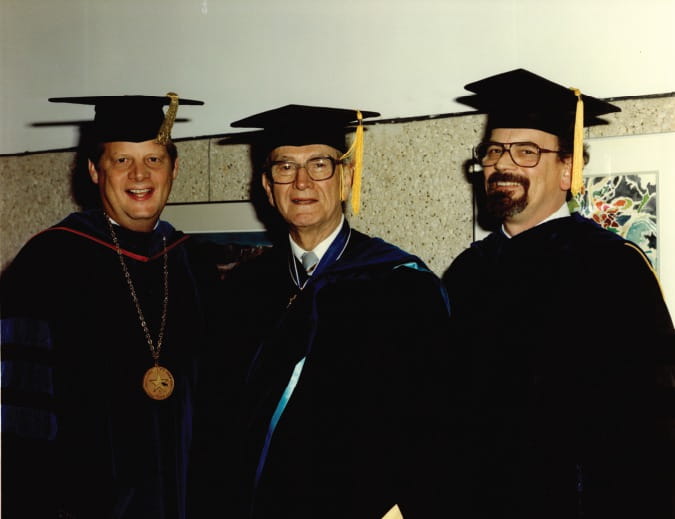
President B. Alan Sugg, Dr. Hector P. Garcia and Dr. Fred Cervantes at Corpus Christi State University Commencement Exercises
Dr. Hector P. García Papers, Collection 5, Box 433, Folder 2. Special Collections and Archives, Mary and Jeff Bell Library, Texas A&M University -Corpus Christi
[i] Hunter, A., & Hunter, L. G. (2000). Texas A&M University Kingsville. Charleston, SC: Arcadia.
[ii] Wrotenbery, R. (1998). Baptist Island College. Fort Worth, Texas: Eakin Press.
[iii] Hunter, C. A., & Hunter, L. G. (2000). Texas A&M University Kingsville. Charleston, SC: Arcadia.
[iv] A&I-CC classroom building named ‘Corpus Christi Hall’. (1975, April 18). Corpus Christi Caller, 12.
[v] Hunter, A., & Hunter, L. G. (2000). Texas A&M University Kingsville. Charleston, SC: Arcadia.
[vi] Hunter, C. A., & Hunter, L. G. (2000). Texas A&M University Kingsville. Charleston, SC: Arcadia.
[vii] Hunter, C. A., & Hunter, L. G. (2000). Texas A&M University Kingsville. Charleston, SC: Arcadia.
[viii] History of the UT (2020, August 23). The University of Texas System. https://www.utsystem.edu/offices/chancellor/history-ut-sys-tem
[ix] Cardozier, R. (n.d.). Higher Education. Texas State Historical Association. https://www.tshaonline.org/handbook/entries/ higher-education
[x] Texas Woman’s University. (2021). Bill establishing TWU System becomes law. https://twu.edu/news-events/news/bill-establishingtwu-system-becomes-law/
[xi] Texas Tech (2021, June 8). Texas Tech University System welcomes Midwestern State University.https://www.texas tech.edu/sto-ries/21-06-ttu-system-welcomes-msu-texas.php
[xii] Hunter, C. A., & Hunter, L. G. (2000). Texas A&M University Kingsville. Charleston, SC: Arcadia.
[xiii] Hunter, C. A.,& Hunter, L. G. (2000). Texas A&M University Kingsville. Charleston, SC: Arcadia.
[xiv] Chancellor Halladay dies suddenly. (1980, July 13). Corpus Christi Caller-Times, p. 1.
[xv] Promising choice. (1972,May 10). Corpus Christi Caller, p. 14.
[xvi] Whitney Halladay. (2020, August 29). Northeast Texas Digital Collection. https://dmc.tamuc.edu/ digital/collection/historic et/id/ 2825/
[xvii] Fumes kill ex-wife of university head (1972, February 25). Corpus Christi Caller, p. 19.
[xviii] ETSU head takes A&I post at (1972,May 6). Dallas Morning News.
[xix] Jackson, M. (1972, May 16). The aim is a university of excellence and stature. Corpus Christi Caller, p. 14.
[xx] Reiste, B. (1983, April 10). Public determination made CCSU Corpus Christi Caller-Times, p. 1.
[xxi] Phelps, (1972, July 28). Support for A&I-CC urged. Corpus Christi Caller, p. 14.
[xxii] Gonzalez, (1972, November 28). A&I-CC bond issue pushed by Halladay. Corpus Christi Caller, p. 20.
[xxiii] A&I-CC fund proposal less than (1972, December 14). Corpus Christi Caller, p. 35.
[xxiv] Davis, A. (1973, May 6). UCC summer school still open this year. Corpus Christi Caller, p. 11.
[xxv] Reiste, B. (1983, April 10). Public determination made CCSU succeed. Corpus Christi Caller-Times, p. 1.
[xxvi] Four bachelor degrees planned. (1973, July 1). Corpus Christi Caller.
[xxvii] Rodman, (1973, May 6). Time has come for Texas A&I CC to operate. Corpus Christi Caller, p. 11.
[xxviii] Hunter, C. A.,& Hunter, L. G. (2000). Texas A&M University Kingsville. Charleston, SC: Arcadia.
[xxix] Kreneck, H., Gammage, B., & Paschal, S. (2007). Texas A&M University-Corpus Christi: The Island University: 60 years, 1947-2007. Texas A&M University-Corpus Christi: Division of Institutional Advancement.
[xxx] Reiste, B. (1983, April 10). Public determination made CCSU succeed. Corpus Christi Caller-Times, p. 1.
[xxxi] Rodman, (1973, May 6). Time has come for Texas A&I CC to operate. Corpus Christi Caller, p. 11.
[xxxii] Young, B. (2020, August 26). Texas A&M University Corpus Christi. Texas State Historical Association Handbook of Texas: https://www.tshaonline.org/handbook/entries/texas-a-m-universitycorpus-christi
[xxxiii] Halladay, W. (1972, December 31). Texas A&I-CC plans to be flexible, original in scope. Corpus Christi Caller-Times, p. 81.
[xxxiv] Miriam Wagenschein. (2011, July 31). Obituaries. Corpus Christi Caller-Times. https://www.legacy.com/us/obituaries/caller/name/miriam-wagenschein-obituary?n=miriam-wagen schein&pid= 189544437
[xxxv] Howard, H. (1998,May 4). A&M-Corpus Christi dean retiring after 25 years Miriam Wagenschein, first teacher of women’s studies, to be honored at reception Corpus Christi Caller-Times, B2.
[xxxvi] Branning, C. (1980, November 12). Committee launches search for new A&I Corpus Christi Caller, p. 17.
[xxxvii] A&I-CC classroom building named ‘Corpus Christi Hall’. (1975, April 18). Corpus Christi Caller, 12.
[xxxviii] A&I-CC faculty office space ready. (1975, January 8). Corpus Christi Caller, 10.
[xxxix] Construction booming at A&I-CC. (1977, March 3). Corpus Christi Caller, 23.
[xl] Branning, C. (1979, July 13). Welfare group’s stay at A&I is explained. Corpus Christi Caller, p. 15.
[xli] A&I building will include Weil gallery. (1976, October 28). Corpus Christi Caller, 23.
[xlii] Construction booming at A&I-CC. (1977, March 3). Corpus Christi Caller, 23.
[xliii] Barbee, D. (2000, September 21). A&M-CC due big donation. Corpus Christi Caller-Times, p. 1.
[xliv] Callaway, M. (1979, April 11). Clements calls for quality education at CCSU dedication. Corpus Christi Caller, p. 15.
[xlv] Chancellor Halladay dies suddenly. (1980, July 13). Corpus Christi Caller-Times, 1.
[xlvi] Kreneck, T. H., Gammage, B., & Paschal, S. (2007). Texas A&M University-Corpus Christi: The Island University: 60 years, 1947-2007. Texas A&M University-Corpus Christi: Division of Institutional Advancement.
[xlvii] Hevesi, D. (2010, June 28). Dolph Briscoe, Texas Governor in the ’70s, Dies at 87. The New York Times. https://www.nytimes.com/2010/06/29/us/29briscoe.html.
[xlviii] Briscoe to sign CCSU bill today. (1977, May 27). Corpus Christi Caller, p. 17.
[xlix] Name makes a splash. (1977, August 23). Corpus Christi Caller, p. 20.
[l] A&I-CC changes name Monday. (1977, August 20). Corpus Christi Caller, p. 16.
[li] New name bill. (1977, February 4). Corpus Christi Caller, p. 13.
[lii] Ozio, R. (1977, January 13). A&I students like new name. Corpus Christi Caller.
[liii] New name bill. (1977, February 4). Corpus Christi Caller, p. 13.
[liv] Spruill, R. (2012, April 18). Truan at rest in Austin grave. Corpus Christi Caller-Times, p. 1.
[lv] Fernandez, S. L. (2001, December 19). Sen. Truan bows out of race for office – He cites demands of campaign, wants time with family. Corpus Christi Caller-Times, p. 1.
[lvi] Spruill, R. (2012, April 18). Truan at rest in Austin grave. Corpus Christi Caller-Times, p. 1.
[lvii] Parker, D. (1996, August 7). $10 million A&M-CC center is dedicated. Corpus Christi Caller-Times.
[lviii] History. (2021). The National Spill Control School. Texas A&M University-Corpus Christi. https://nscs.tamucc.edu/history.html
[lix] Shattuck, H. (2000, October 1). Corpus Christi: Blucher House stands tall in town’s history. Houston Chronicle. https://www.chron.com/life/travel/article/Corpus-Christi-BlucherHouse-stands-tall-in-2015772.php
[lx] Phelps, G. (1987, August 13). Fund could lead to survey degree program. Corpus Christi Caller-Times, p. 48.
[lxi] History. (2020, August 29). Conrad Blucher Institute. Texas A&M University-Corpus Christi. https://www.conradblucherinstitute.org/history
[lxii] Commemorating Dr. Jeffress. (2018). Conrad Blucher Institute. Texas A&M University-Corpus Christi. https://cbi.tamucc.edu/Commemorating-Dr-Gary-]effress/
[lxiii] Hunter, C. A., & Hunter, L. G. (2000). Texas A&M University Kingsville. Charleston, SC: Arcadia.
[lxiv] Goodwin, B. (1983, July 5). Leach cites need for long-range plan. Corpus Christi Caller, p. 14.
[lxv] Hunter, C. A.,&Hunter, L. G. (2000). Texas A&M University Kingsville. Charleston, SC: Arcadia.
[lxvi] Branning, C. (1981, April 26). New offices are fit kings. Cor pus Christi Caller-Times, p. 79.
[lxvii] About Us. (2021). King Ranch. https://king-ranch.com/
[lxviii] Ashton, J. & Sneed, E. P. (n.d.). Handbook of Texas Online. Texas State Historical Association. https://www.tshaonline.org/handbook/entries/king-ranch
[lxix] Ashton, J. & Sneed, E. P. (n.d.). Handbook of Texas Online. Texas State Historical Association. https://www.tshaonline.org/hand-book/entries/king-ranch
[lxx] Newton, B. (1977, October 14). Leach urges cooperation among universities. Corpus Christi Caller, p. 13.
[lxxi] Goodwin, B. (1983, August 2). Dr. Pettit is named chancellor of South Texas university group. Corpus Christi Caller, p. 1.
[lxxii] Goodwin, B. (1983, July 5). Leach cites need for long-range plan. Corpus Christi Caller, p. 14.
[lxxiii] Davis, J. (1987,March 17). S. Texas system is praised. Corpus Christi Caller, p. 14.
[lxxiv] Goodwin, B. (1983, August 2). Dr. Pettit is named chancellor of South Texas university group. Corpus Christi Caller, p. 1.
[lxxv] Pettit, L. K. (2021, February 26). Montana must keep partisan politics out of education. https://helenair.com/opinion/colum-nists/montana-must-keeppartisan-politics-out-of-education/article9dd9a054-l79a-5Sa4-94e3-28c788704fce.html
[lxxvi] Bio. (2021). Lawrence K. Pettit. http://www.lawrencekpettit.com/bio
[lxxvii] Goodwin, B. (1983, August 2). Dr. Pettit is named chancellor of South Texas university group. Corpus Christi Caller, p. 1.
[lxxviii] Acosta, T. P. (n.d.). Mexican American Legal Defense and Educational Fund. Texas State Historical Association.
https://www.tshaonline.org/handbook/ entries/mexican-american-legal-defense-and-educational-fund
[lxxix] Carales, V. D. & Doran, E. (2020). The pursuit of equal educational opportunity: A historical analysis of the South Texas/Border Initiative. Educational Policy. https://lib.dr.iastate.edu/cgi/viewcon-tent.cgi?article=1167&con text=edu_pubs
[lxxx] Flack, T. (2003). Presentation on South Texas Border Initiatives. House Border and International Affairs Committee. Texas House of Representatives. 0592.PDF http://www.thecb.state.tx.us/DocID/PDF/
[lxxxi] Sugg, B. A. (2008, February 13). Scott Lunsford interviewed Alan Sugg. (S. Lunsford, Interviewer). file:///D:/Download/ TRANS-SUGG-B-Alan-Memories-20080213-FINAL.pdf
[lxxxii] Sugg, B. A. (2008, February 13). Scott Lunsford interviewed Alan Sugg. (S. Lunsford, Interviewer). file:///D:/Download/ TRANS-SUGG-B-Alan-Memories-20080213-FINAL.pdf
[lxxxiii] Past Presidents. (2020, August 29). Retrieved from University of Arkansas System. https://www.uasys.edu/leadership/office-ofthe-president/past-presidents/
[lxxxiv] A&I posts enrollment decrease. (1986, September 19). Corpus Christi Caller.
[lxxxv] Rosser, J. (1978, October 12). CCSU worker must move after years on campus. Corpus Christi Caller, p. 66.
[lxxxvi] Lochbaum, P. (1979, April 4). Area colleges discourage foreign students. Corpus Christi Caller, p. 19.
[lxxxvii] Ozio, R. (1977, August 21). Classes to begin Aug. 29 at Corpus Christi State. Corpus Christi Caller, p. 23.
[lxxxviii] University of Corpus Christi plans huge expansion pro gram. (1953,June 7). Dallas Morning News.
[lxxxix] Wrotenbery, C. R. (1998). Baptist Island College. Fort Worth, Texas: Eakin Press.
[xc] Early Childhood Development Center. (2020, August 27).
Texas A&M University Corpus Christi. https://ecdc.tamucc.edu/
[xci] Moore Foundation. (2020). https://moorefoundationcc.com/ [xcii] Halladay, D.W. (1972, December 31). Texas A&I-CC plans to be flexible, original in scope. Corpus Christi Caller-Times, p. 81.
[xciii] 217 receive degrees at CCSU commencement. (1980, December 19). Corpus Christi Caller, p. 23.
[xciv] Lopez, A. (2016, February 23). Rodriguez Honored by LU-LAC. Nueces County Record Star. https://www.recordstar.com/arti-cle/20160223/NEWS/160229733
[xcv] University panel to study tenure. (1982, March 12). Corpus Christi Caller, p. 23.
[xcvi] Goodwin, B. (1983, July 15). Leach: Laredo State will not ‘dis appear’. Corpus Christi Caller, p. 22.
[xcvii] Palmer, D. (1987, April 16). Unity cited as key to improving higher education. Corpus Christi Caller, p. 13.
[xcviii] History of the UT System. (2020, August 23). The University of Texas System. https://www.utsystem.edu/offices/chancellor/history-ut-system
[xcix] Hunter, C. A., & Hunter, L. G. (2000). Texas A&M University Kingsville. Charleston, SC: Arcadia.
[c] Dietz, K. (1993, June 1). CCSU, A&I stand to benefit from legislative priorities. Corpus Christi Caller-Times, A5.
[ci] Halladay, D. W. (1972, December 31). Texas A&I-CC plans to be flexible, original in scope. Corpus Christi Caller-Times, p. 81.
[cii] Rosser, J. (1980, February 10). Enrollment drop worries Texas A&I. Corpus Christi Caller-Times, p. 15.
[ciii] Goodwin, B. (1987, November 11). Sugg says A&M, UT eye-ing South Texas campuses. The Corpus Christi Caller-Times, p. 1.
[civ] Williams, L. (1987, May 15). Theory didn’t work in Florida, Alan Sugg says. Corpus Christi Caller, p. 1.
[cv] Palmer, D. (1987, April 28). Merger of Del Mar, CCSU resurfaces. Corpus Christi Caller, p. 1.
[cvi] Thompson, J. (1990). Challenge and triumph: The first 20 years of Laredo State University. Laredo, Texas: Laredo State University.
[cvii] Palmer, D. (1987, April 16). Unity cited as key to improving higher education. Corpus Christi Caller, p. 13.

